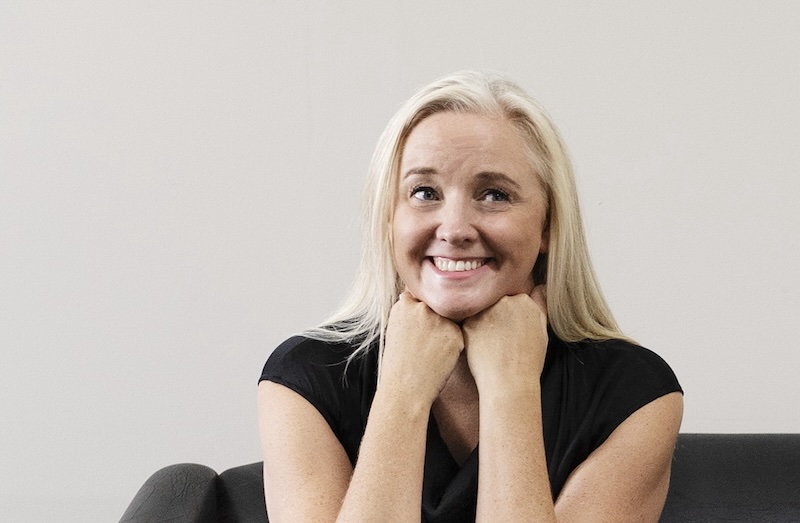Balance is a key part of any diet, but what does that look like when it comes to the media industry? Last week, the Communications Council aimed to answer that question, gathering the industry in one room to hear from its leaders in an event called Media Spotlight, run as part of the 2024 Beacon Awards. Zahra Shahtahmasebi reports from the audience.
In the dimly lit Aotea Centre, with theatrical fog swirling about, it was hard not to feel inspired as media leaders took turns to share their wisdom and champion the industry.
Even more so after the particularly rough time it has been for the media in Aotearoa – the last few months have been confronting, to say the least.
But hearing the speakers spotlight the industry and discuss why a well-functioning fourth estate is so important was reassuring.
Communications Council Chair of Media Rufus Chuter made an entrance by walking out to the Black Eyed Peas’ song, ‘Pump it louder’ – as emcee he welcomed the audience of over 300 to the event, aptly titled Media Spotlight.
Essentially the key question was, “What does a balanced media diet look like?”
Doughnuts were on hand to help us get to the bottom of this, in the event’s creative imagery, and then after much foreshadowing from Chuter, real ones during the intermission.
It’s no secret balance is sought after when it comes to maintaining a diet of any kind, be it food or media. So how can the media industry in Aotearoa have its doughnuts and eat them too, all while maintaining a healthy presence with its consumers?
Four and a half hours later, the answer became clear – it’s all down to collaboration.
Keeping it local
Leading session one, Why local matters, was Radio Broadcasters Association CEO Al Jamison. He told the crowd perceptions that local and traditional media are less effective have led to gaps in investment – but this doesn’t reflect the data, which shows around 65 to 70% of media consumption is through local channels.
Founder of innovation studio Previously Unavailable and expert on marketing effectiveness, James Hurman took to the stage next. His first line was “if you are not spending half your budget locally, you’re a bloody idiot.”
Those perceptions Jamison mentioned before have hamstrung the conversation – digital platforms appear to hold the market and why wouldn’t they? They are cost effective with extensive reach and you can actually see the results.
Hurman conceded it’s true linear TV consumption is declining but a good enough job in advertising would arrest that.
And yet in spite of the decline and the mainstream perception, TV remains the most effective campaign channel.
“How can this still be the case – when no one is watching TV, advertising has gone down and become more expensive?” asks Hurman.
But when it comes to ads, they have to be remembered to work, so the more attention the better, which TV continues to deliver, he explains.
“TV delivers stable levels of visual attention – with at least two times the view time of digital video ads.”
Creating trust
Data collected from Effie show that in NZ, those that lead with broadcast TV don’t do well in vanity metrics, like an increase in social media followers. However, these campaigns drive the biggest brand and business effects effects: increased sales, shares and profits.
What it boils down to is that broadcast media creates trust, says Hurman.
It sends a signal to people that they are seeing this ad along with lots of other people just like them – compared to digital, where they have no idea whether anyone else is seeing the same ad.
But it’s not one or the other – use traditional mediums alongside digital for the best results. Data from the Institute of Practitioners in Advertising shows spending 45% of your budget on TV is the sweet spot, driving the most benefits and effectiveness before the bell curve starts to drop off.
The worst thing to do is nothing
This reporter was left feeling a little mind-blown by Hurman’s talk, especially the assurance of TV’s continued success, despite all of the conversations to the contrary.
A panel made up of TVNZ CEO Jodi O’Donnell, NZME Chief Audio Officer Jason Winstanley, The Spinoff Founder Duncan Grieve and Hurman rounded out the session.
While there was the option to use Slido to ask questions, which the audience took to with gusto, there wasn’t enough time to get to these as panel moderator Jamison had a pre-prepared list to get through.
On the question of balance, and working in a period of constant change, O’Donnell quipped the worst thing to do is nothing.
“Go back to the data and do some testing,” she advises.
For Grieve at The Spinoff, a born digital platform, it has no legacy behaviours to move on from. At NZME, parent company to many brands, including New Zealand Herald, and a stable of radio stations, Winstanley says all platforms have a digital element. While he concedes there is always more they could be doing, transformations take time.
O’Donnell says running a legacy media business and simultaneously trying to move foward feels a bit like flying a plane while changing the engine at the same time.
“We’re doing a lot to keep audiences happy while we build the future.”
Check back on Monday for part 2 of the Media Spotlight round-up.





















Discussion about this post